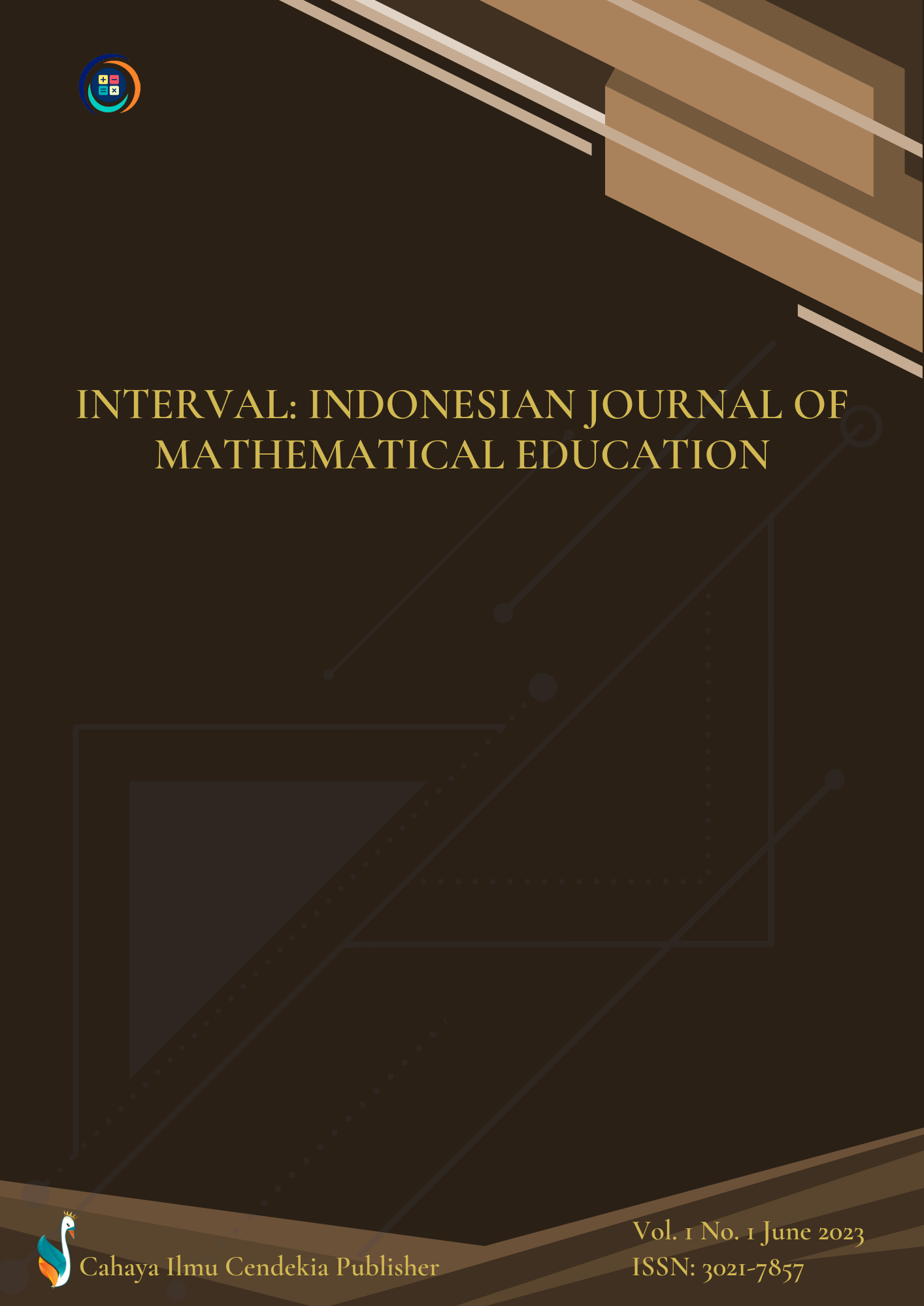Increasing Mathematics Learning Activities Through Numbered Heads Together (NHT) Cooperative Learning Models In Students
Abstract
The purpose of this study is to see an increase in mathematics learning activity through the cooperative learning model of the numbered heads together type in class VIID students of SMP Negeri 14 Surakarta. This study uses a type of classroom action research. The subjects in this study were teachers and students of class VIID at SMP Negeri 14 Surakarta. This study consisted of 3 cycles, namely cycle 1, cycle II, and cycle III. Sources of data in this study were obtained from observation sheets of students' learning activities in cycle I, cycle II, and cycle III, observation sheets of the learning process recorded by observers, teacher and student information, places and events where the learning process took place. This research is expected to contribute to schools or in the field of education. The results of this study are that there is an increase in students' mathematics learning activities through the application of the Numbered Heads Together (NHT) cooperative learning model in learning mathematics.
References
D. P. Sari and E. Surya, “Development the Module of Mathematics Statistics 1 by using the Model of Dick and Carey Design of teaching materials; dick and carey model; module; random variable,” Int. J. Sci. Basic Appl. Res., vol. 34, no. 1, pp. 237–246, 2017.
S. Hardiarti, “Etnomatematika: Aplikasi Bangun Datar Segiempat Pada Candi Muaro Jambi,” Aksioma, vol. 8, no. 2, p. 99, 2017, doi: 10.26877/aks.v8i2.1707.
Y. Kusumawati, “Instrumen Penelitian Pembelajaran Kooperatif Tipe Numbered Head Together Untuk Meningkatkan Kemampuan Komunikasi Matematis Siswa SMP,” J. Inov. Dan Manaj. Pendidik., vol. 2, no. 1, pp. 53–60, 2022, doi: 10.12928/jimp.v2i1.4620.
S. Syahrial, D. A. Kurniawan, A. Asrial, H. Sabil, S. Maryani, and E. F. S. Rini, “Professional Teachers: Study of ICT Capabilities and Research Competencies in Urban and Rural?,” Cypriot J. Educ. Sci., vol. 17, no. 7, pp. 2247–2261, 2022, doi: 10.18844/cjes.v17i7.7590.
D. Darmaji, A. Astalini, D. A. Kurniawan, and F. T. Aldila, “Gender and Perception: Implementation of Web-based Character Assessment in Science Learning,” Int. J. Instr., vol. 15, no. 4, pp. 311–338, 2022, doi: 10.23887/jere.v6i1.37737.
Astalini et al., “Impact of Science Process Skills on Thinking Skills in Rural and Urban Schools,” Int. J. Instr., vol. 16, no. 2, pp. 803–822, 2023.
C. Purnomo, “Model Pembelajaran Kooperatif Tipe Make a Match Untuk Meningkatkan Hasil Belajar,” J. Educ. Relig. Stud., vol. 1, no. 02, pp. 53–57, 2021, doi: 10.57060/jers.v1i02.22.
F. T. Aldila, E. F. S. Rini, S. W. Octavia, N. N. Khaidah, F. P. Sinaga, and N. Septiani, “The Relationship of Teacher Teaching Skills and Learning Interests of Physics Students of Senior High School,” Edufisika J. Pendidik. Fis., vol. 8, no. 1, pp. 101–105, 2023, doi: 10.59052/edufisika.v8i1.24864.
E. F. S. Rini and F. T. Aldila, “Practicum Activity: Analysis of Science Process Skills and Students ’ Critical Thinking Skills,” Integr. Sci. Educ. J., vol. 4, no. 2, pp. 54–61, 2023, doi: 10.37251/isej.v4i2.322.
D. Darmaji, A. Astalini, D. A. Kurniawan, F. T. Aldila, and H. Pathoni, “Gender and Perception: Implementation of Web-based Character Assessment in Science Learning,” J. Educ. Res. Eval., vol. 6, no. 1, pp. 131–142, 2022, doi: 10.23887/jere.v6i1.37737.
W. Wati and R. Fatimah, “Effect Size Model Pembelajaran Kooperatif Tipe Numbered Heads Together (Nht) Terhadap Kemampuan Berpikir Kritis Siswa pada Pembelajaran Fisika,” J. Ilm. Pendidik. Fis. Al-Biruni, vol. 5, no. 2, pp. 213–222, 2016, doi: 10.24042/jpifalbiruni.v5i2.121.
E. F. Setiya Rini, G. Wibisono, A. Ramadhanti, N. N. Simamora, and D. Chen, “Pengaruh Kemandirian Terhadap Prestasi Belajar Siswa Kelas XI di SMA Negeri 11 Kota Jambi,” J. Pendidik. Fis. dan Teknol., vol. 6, no. 2, p. 256, 2020, doi: 10.29303/jpft.v6i2.2211.
E. F. Setiya Rini, R. Fitriani, W. A. Putri, A. A. Br. Ginting, and M. M. Matondang, “Analisis Kerja Keras dalam Mata Pelajaran Fisika di SMAN 1 Kota Jambi,” SAP (Susunan Artik. Pendidikan), vol. 5, no. 3, pp. 221–226, 2021, doi: 10.30998/sap.v5i3.7764.
M. Fathurrohman, Model-model Pembelajaran Indovatif. Yogyakarta: AR-RUZZ MEDIA, 2015.
I. Magdalena, T. Sundari, S. Nurkamilah, and D. A. Amalia, “Analisis bahan ajar,” Nusant. (Jurnal Ilmu Pengetah. Sos., vol. 2, no. 2, pp. 311–326, 2020.
M. Saironi and Y. Sukestiyarno, “Kemampuan Berpikir Kreatif Matematis Siswa dan Pembentukan Karakter Rasa Ingin Tahu Siswa pada Pembelajaran Open Ended Berbasis Etnomatematika,” Unnes J. Math. Educ. Res., vol. 6, no. 1, pp. 76–88, 2017.
N. Hamid, A. Arvyati, and I. Ikman, “Pengaruh Model Pembelajaran Berbasis Masalah Terhadap Kemampuan Pemahaman Konsep Matematis Siswa Kelas VIII Smp Kesehatan Mandonga,” J. Penelit. Pendidik. Mat., vol. 7, no. 2, pp. 155–168, 2019, doi: 10.36709/jppm.v7i2.8276.
A. Prihantoro and F. Hidayat, “Melakukan Penelitian Tindakan Kelas,” Ulumuddin J. Ilmu-ilmu Keislam. /, vol. 9, no. 1, 2019.
C. Hidayat, I. Marwan, and D. Mulyana, “Peningkatan Aktivitas Dan Hasil Belajar Matakuliah Kurikulum Pembelajaran Penjas Menggunakan Model Discovery Learning Pada Mahasiswa Kelas a Jurusan Pendidikan Jasmani,” Altius J. Ilmu Olahraga dan Kesehat., vol. 7, no. 2, 2019, doi: 10.36706/altius.v7i2.8093.
Copyright (c) 2023 Naning Rahmawati, Ziadoon Otaiwi, Warud Nakkhasen, Nhãn Phan Thãnh

This work is licensed under a Creative Commons Attribution-NonCommercial 4.0 International License.
Authors who publish with this journal agree to the following terms:
- Authors retain copyright and acknowledge that the Interval: Indonesian Journal of Mathematical Education is the first publisher licensed under a Creative Commons Attribution 4.0 International License.
- Authors are able to enter into separate, additional contractual arrangements for the non-exclusive distribution of the journal's published version of the work (e.g., post it to an institutional repository or publish it in a book), with an acknowledgment of its initial publication in this journal.
- Authors are permitted and encouraged to post their work online (e.g., in institutional repositories or on their website) prior to and during the submission process, as it can lead to productive exchanges and earlier and greater citation of published work.





.png)
.png)













